The Story of the Nazi Burger King
How a Third Reich power station became a fast food restaurant.
Nuremberg, Germany is filled with relics from the Nazi period.
While the most offending marks of the time have been largely removed — you’d be hard-pressed to find a swastika or portrait of Hitler anywhere in the city — a few Third Reich era buildings can still be found, even if you don’t look too hard.
Many structures and landmarks in Nuremberg’s downtown were made famous (or rather, infamous) by Leni Riefenstahl’s Triumph of the Will, the Nazi propaganda film designed to showcase the might of Hitler’s party. The main road by the Hauptbahnhof is instantly recognizable, and as you make your way south, you’ll come across the Nazi Party Rallying Grounds, where choreographed displays of Nazi strength once took place.
On your way, you’ll encounter a Burger King with a prominent outline of a Nazi Reichsadler.
Subscribe to the mailing list
Get updates from Eastern Europe and more, including guides, tips, and news!
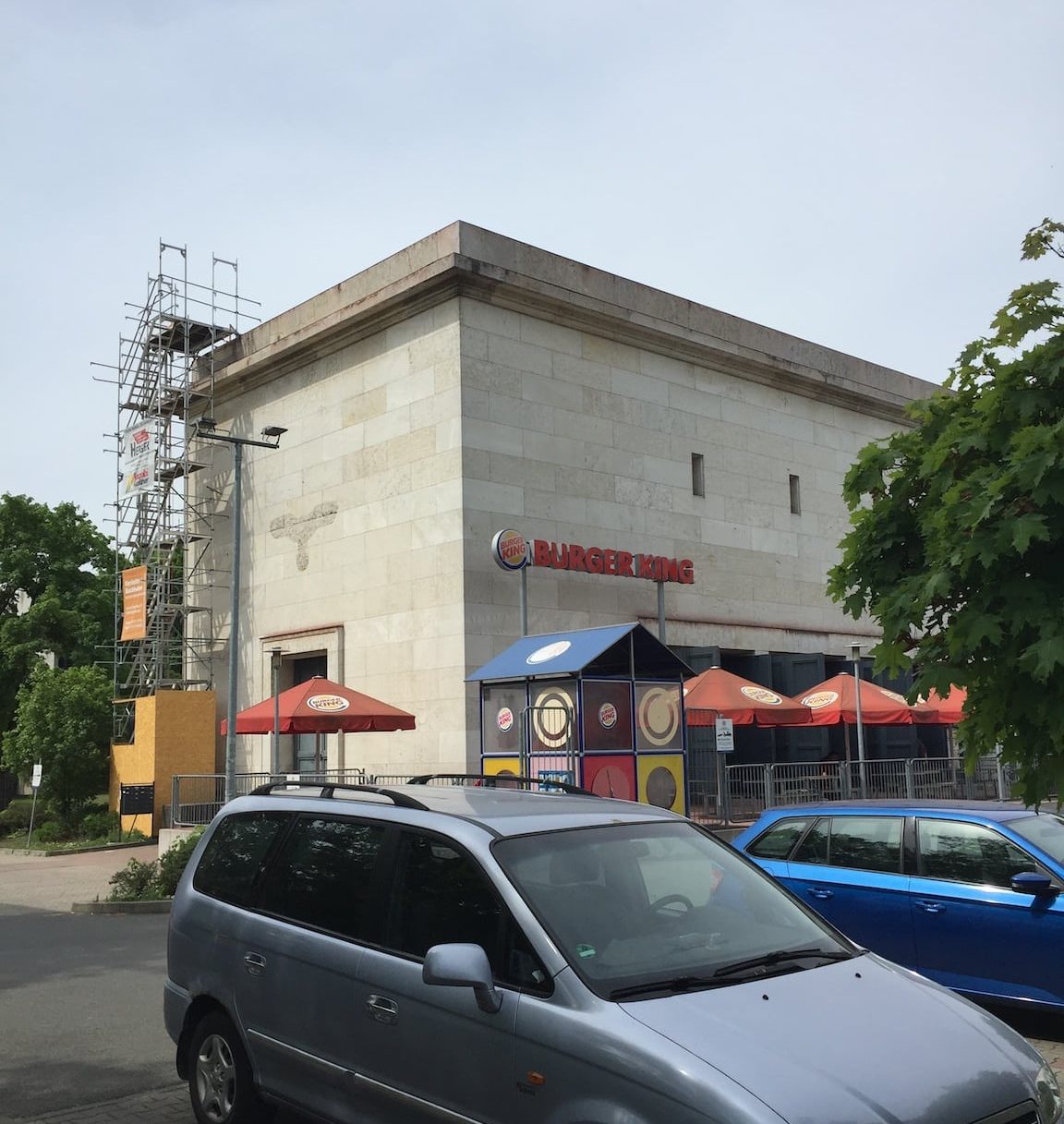
Wait, what?
It’s strange, yes — especially given how hard it is to find even the slightest reference to the Nazi period in other parts of the city. This is not to say that Nuremberg ignores its Nazi past; the Doku-Zentrum, a museum close to the rallying grounds, goes into extensive detail about Nazi crimes and Nuremberg’s role during the Third Reich, and other memorials for those genocided during the war can be found all around the city.
But even on the nearby rallying grounds, all swastikas have been removed and their outlines scrubbed so as to be no longer identifiable. So why, then, has this Reichsadler remained on the building?
First, let’s go into a little history.
What was this building during the Nazi period?
One of the most interesting parts about this building was that it was pretty important during Hitler’s reign. It was designed by Nazi architect Albert Speer in 1936 as a power station for the rallying grounds, which allowed them to be lit during party speeches and celebrations. However, the capabilities of the “Trafohaus” as it was known extended far beyond that; this small building could provide enough power for an entire city.
What happened after the war?
As the city began its reconstruction period following World War II, it was unclear what should be done with the buildings of the era. Of course, there would be controversy continuing to use them, but there would also be controversy if they chose not to use them. Nuremberg was devastated after the war, and much of the rebuilding efforts were focused on, well, rebuilding. Anyone who proposed further destruction would sound ridiculous.
The building laid dormant for several years before being bought by Nuremberg-based power company N-Ergie in 1960, who continued to use the building as both an energy transformer and a warehouse until 1998.
For the next few years, it stood empty. There was some talk of turning the location into a tower hotel with the power station integrated into its base (a project spearheaded by architect Hanno Höllfritsch), but after a few years, it became clear that this project would never be realized.
Why did Burger King buy it?
Because they could, it seems. The area is actually pretty popular; it’s very close to the stadium where Nuremberg’s soccer team plays its games, and several festivals take place in the surrounding parks.
In 2006, Burger King decided to buy the property in a move that then-head of the museum Doku-Zentrum apparently described as “spicy.” The current owners ban people from taking pictures inside the building; however, you are free to take pictures from the outside — the owners claim photos like this happen nearly every half hour.
It should also be noted that Burger King is not the only business in this building. Next door is a gym, and even in other places in both Nuremberg and the rest of Germany, businesses of all sorts can be found in buildings designed and constructed during the fascist era. In fact, even some German government offices are housed in old Nazi buildings, such as the Finance Ministry in Berlin.
Have they tried to remove Reichsadler?
Opinions on this vary. The common consensus is that they are either not allowed to or don’t see the value in doing it.
Concerning this second point, even if the Reichsadler were to be removed, it’s not as though doing so would make it any less identifiably a Nazi building. If you have even a passing awareness of the fascist architectural style, this building is so clearly made by the Nazis that the Reichsadler itself is almost superfluous.
Additionally, the history of the Adler itself goes back for ages in Germany. Germans used to put their iconic eagle on everything, and even though Hitler made it more identifiable by sharpening it and adding the swastika, removing all of the German eagles from the country would be a many years long process. That’s why many Third Reich-era eagles can be found around Germany to this day, only with the swastika covered.
The current head of Doku-Zentrum seems to fall in line with this thinking, saying that the presence of the Reichsadler is a “curiosity” but that he also “[does] not see anything that needs to be scandalized.”
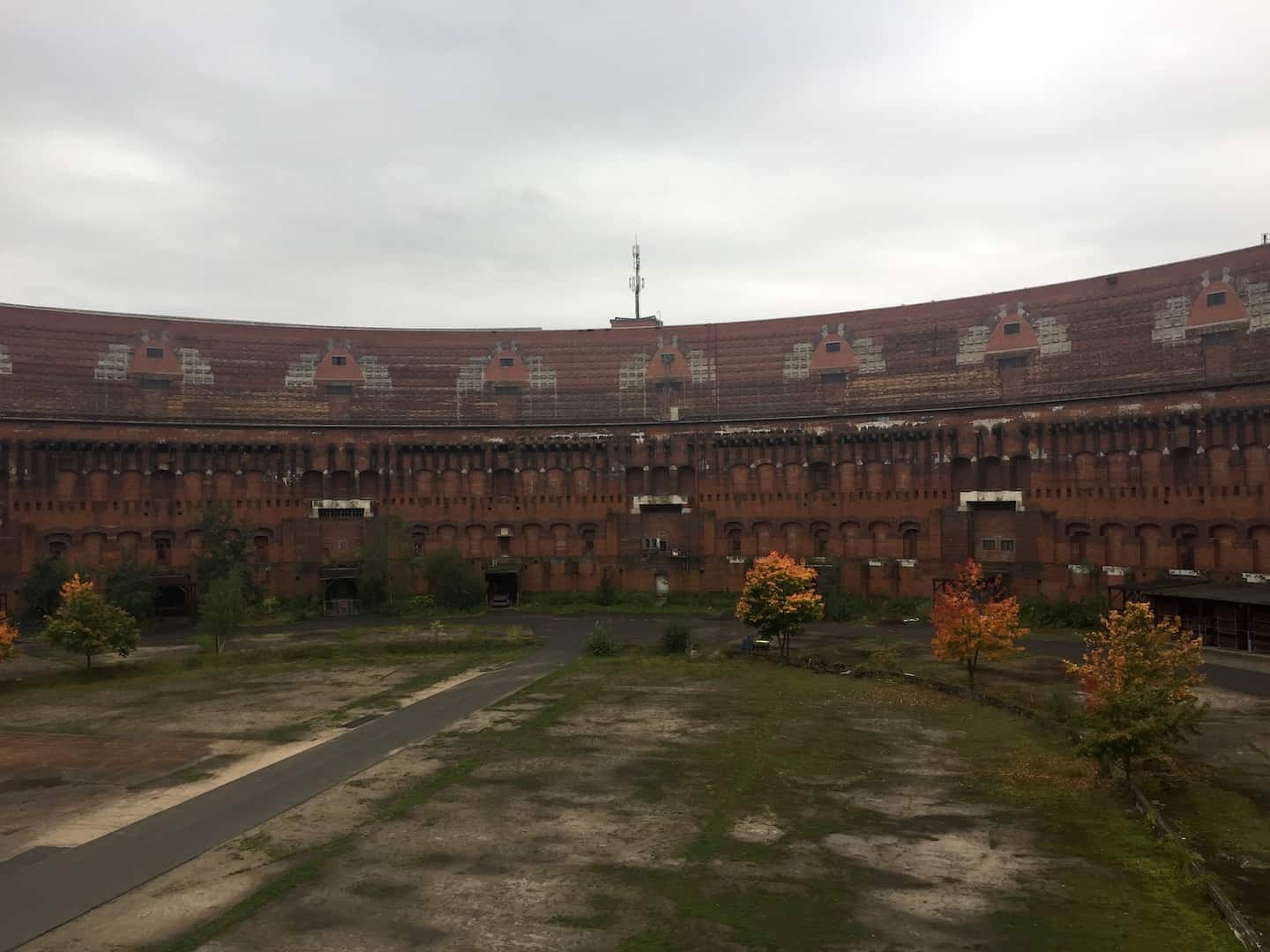
A photo taken from the nearby Doku-Zentrum.
Why don’t they turn the building into a museum?
The short answer is that there are already many museums in Nuremberg detailing the Nazi period, and while more information is always appreciated, it simply doesn’t make sense to have another museum within walking distance of a different, larger, better museum.
Some also make the argument that reusing the building in this manner is a better response than turning it into a memorial, claiming that the ultimate “screw you” to the Nazis is to use their monuments of power as shells for sub-tier burger restaurants. This is, in their estimation, compounded by the fact that Hitler himself was a vegetarian and would presumably not be pleased to see meat being sold in a former party building.
I’m less sympathetic to this argument, but as far as I can tell, using this building as nothing more than a burger restaurant — especially given the fact that a sign detailing the building’s history can be found directly in front of it — is relatively harmless.
Conclusion
In the end, the Nazi Burger King is more curious than dangerous. It’s a marker of a country still struggling with the icons of its past. Even in the modern era, debates are had across Germany about what to do with Nazi buildings: should they be preserved? Destroyed? Left as they are?
The current response seems to be responding to each building on a case-by-case basis. But as more Nazi-era buildings fall into disrepair, it is certain that questions like these will become increasingly relevant.
What do you think should be done with the building? Leave a comment down below!
Keep reading
The Top 7 Cheapest (and Easiest!) Places to Learn Russian
The Top 7 Cheapest (and Easiest!) Places to Learn Russian The places where you can learn – and actually use – Russian. Russian ain’t easy. If you’re only used to speaking English, approaching a language like Russian may seem like a daunting task. It’s got weird...
The Best Uber Alternatives in Latvia
The best uber alternatives in latvia Uber isn't here yet. So what else is there? Uber hasn’t officially sunk its claws into Latvia… yet. But if you’re visiting the country, you’re probably going to be justifiably nervous about hailing a cab from the street. After all,...
Five East German Day Trips You Can Still Take Today
Five East German Day Trips you Can Still Take Today Socialist tourist hotspots that still rock in 2019. For many years, the Berlin Wall was the singular icon of East Germany. The East Germans were a people literally walled off from the rest of the world, it was...

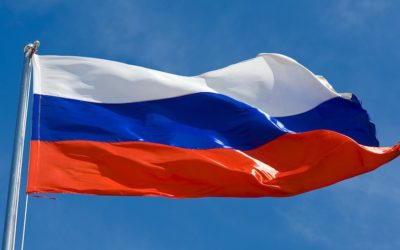
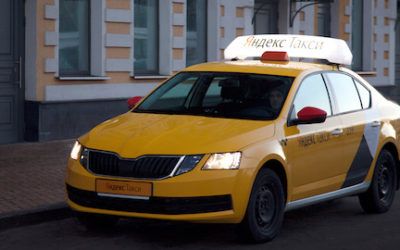
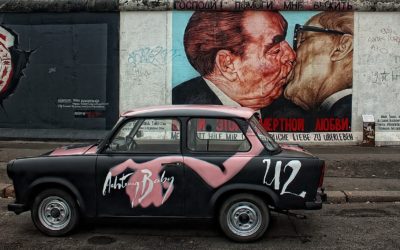
0 Comments